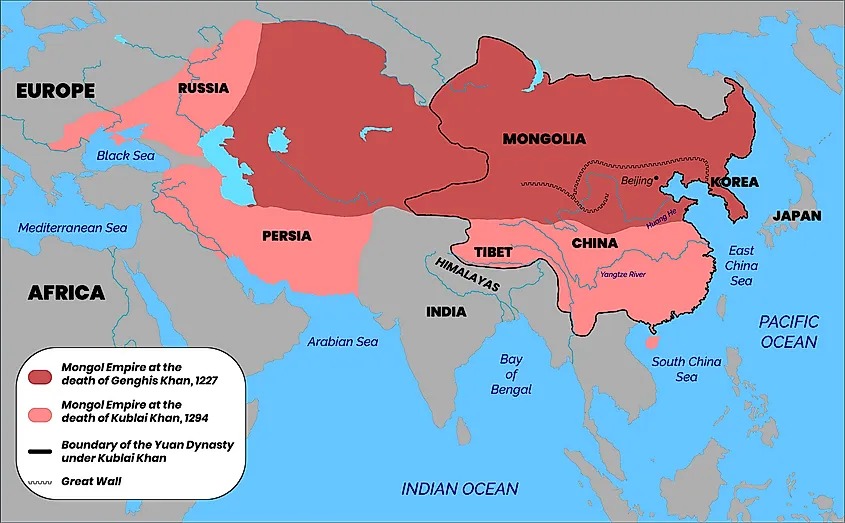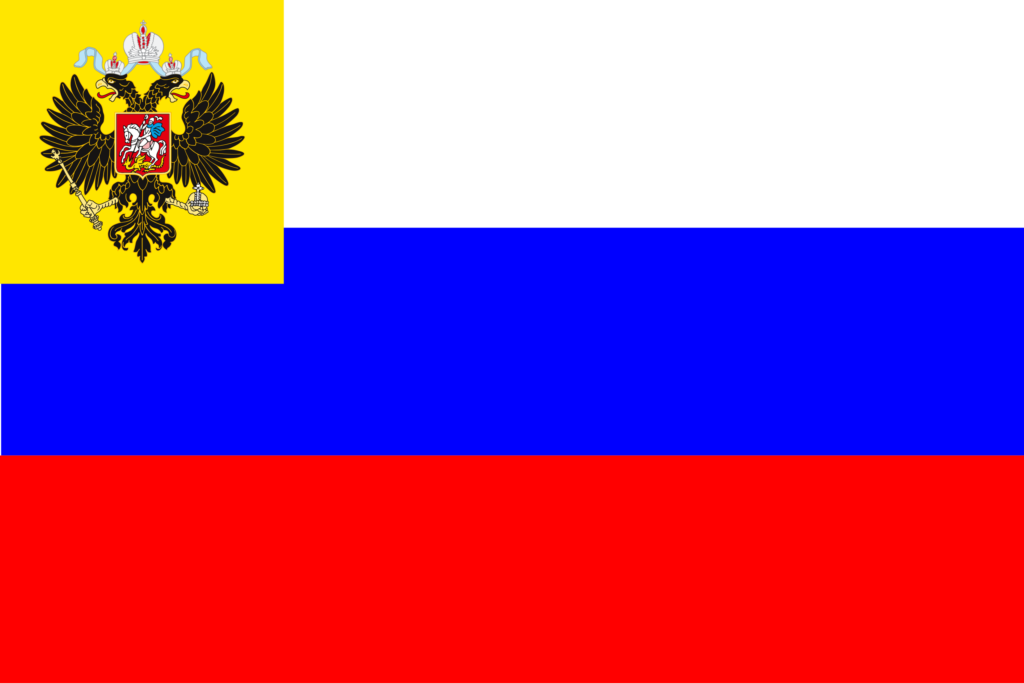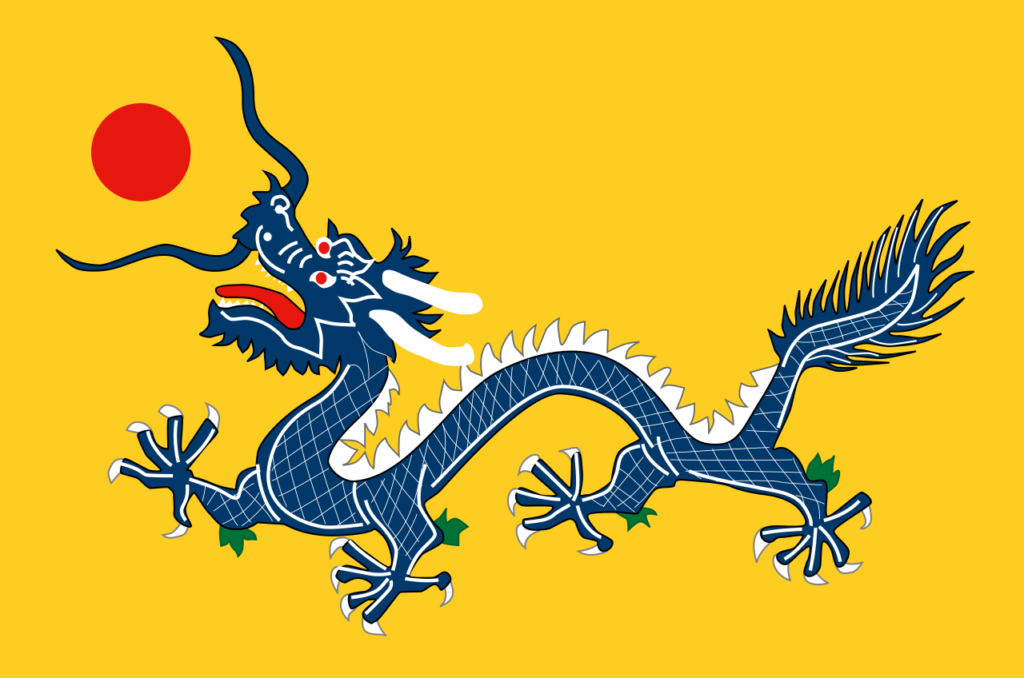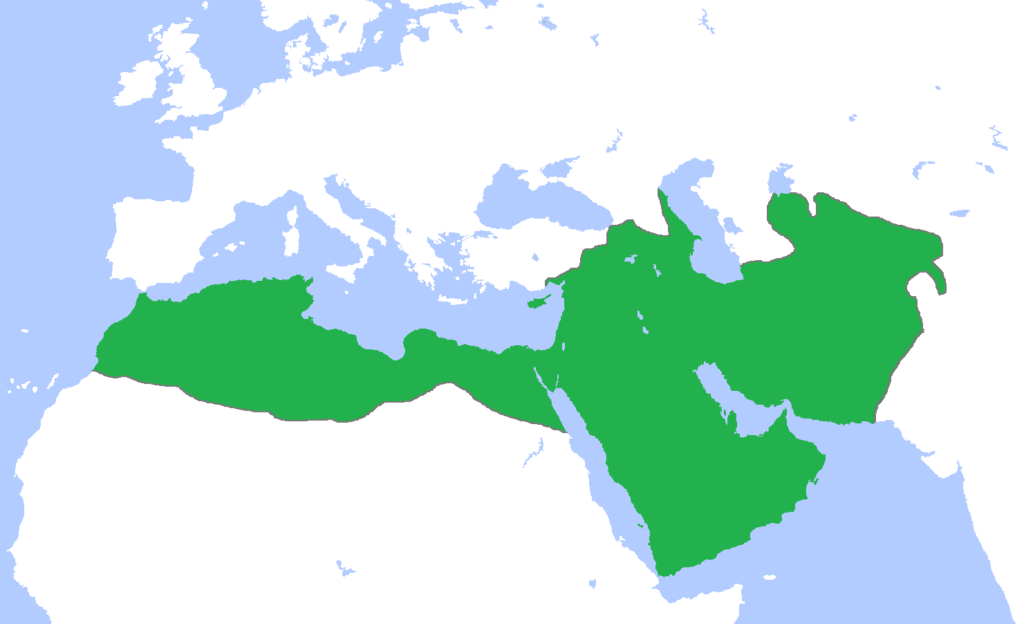Humankind’s history has seen several greatest empires and kingdoms. We will talk about the top 10 biggest empires in history. Relive these largest empires and explore their amazing stories.

Human Beings have evolved a lot compared to any other species on the earth. This has happened mainly due to living together as a group and communicating. When humans started civilising, they first formed small groups and evolved into large empires. In the last five thousand years, we have seen the rise and fall of hundreds of kingdoms. Here we list a few of the biggest empires.
World’s 10 Biggest Empires in History
- British Empire
- Mongol Empire
- Russian Empire
- Qing Dynasty
- Spanish Empire
- Umayyad Caliphate
- Abbasid Caliphate
- Yuan Dynasty
- Xiongnu Empire
- Empire of Brazil
Top 10 Largest Empires in the History of Humankind
1. British Empire

The British Empire consisted of the British mainland, colonies, dependencies, dominions, protectorates and other territories ruled by the United Kingdom. It was spread across multiple continents and islands at its peak of power. At its peak time, it was the biggest empire in history. The empire first attempted to gain overseas territories in the late 16th century during the time of the industrial revolution. By the early 20th century, it covered around 35 million sq kilometres. Once it was called an “empire on which the sun never sets” as it was spread across almost every part of the world.
2. Mongol Empire

The Mongol Empire started to expand in the early 13th century. Within a century, it became the largest Empire in history and the largest contiguous land empire in history till now. It possessed a land area of 24 million sq kilometres at its peak. It stretched from the Sea of Japan to eastern Europe and the arctic to the Indian subcontinent at the height of its power.
One of the biggest empires in history, the Mongol Empire began with the unification of multiple Mongol nomadic tribes under the administration of Genghis khan. It disintegrated at the same pace with which it rose under the leadership of Genghis Khan due to the power struggle between his grandsons. It was the fourth largest empire in history in terms of the global population share of 31 per cent.
3. Russian Empire

The Russian Empire is one the world’s youngest empires, spanning from 1721 to 1917. It consisted of present-day Russia, central Asia, eastern Europe and a few colonies in the continent of North America. It covered an area of 22.8 million sq kilometres, being the third largest empire in terms of land occupancy. At the start of the 20th century, it started losing power due to a weak autocratic ruler who administered poorly, leading to the Russian Revolution. The Revolution ended with the abolition of the monarchy in 1907 and the end of the great Russian empire.
4. Qing Dynasty

The Qing Dynasty started in 1636 emerging from the Later Jin Dynasty. It ruled over present-day China and Taiwan and some other parts of Asia touching southern china. It was stretched over a land area of 14.7 million sq kilometres. It was the last orthodox Chinese empire before being succeeded by the Republic of China. It was the most prominent dynasty in the history of China and the fourth-largest empire in the history of humankind. It was also the largest empire by share of the world population at a time ruling 37 per cent of the world population.
5. Spanish Empire

The Spanish Empire was one of the empires which emerged during the age of revolution and became a colonial empire which was governed by Spain and its predecessor states from 1492 to 1976. It was stretched across 5.29 million sq kilometres at its peak in the 18th century. Like the British empire, the industrial revolution also helped the Spanish empire to gain overseas territories across the globe and was called “the empire on which the sun never sets”.
6. Umayyad Caliphate

Umayyad Caliphate was the second of the four caliphates after Muhammad’s death, ruled by the Umayyad dynasty. Its reign started in 661 CE after the downfall of the first caliphate, the Rashidun Caliphate and ended in 750 CE after being overthrown in the Abbasid Revolution. Umayyad caliphate expanded its territory to north Africa, from present-day Spain and Portugal in the west to present-day Pakistan in the east. The empire gained a total of 11.1 million sq kilometres of land area. Internal politics was the main reason for the fall of the empire, as happens to be the case in most of the kingdoms.
7. Abbasid Caliphate

Abbasid Caliphate was the third of the four caliphates established after the demise of Muhammad. It came into its establishment in 750 and was disestablished in 1517. The empire was spread across an area of 11.1 million sq kilometres, occupying 8.24 per cent of the world’s total land area. The golden age of Islam was considered when its centre of government was Baghdad. Iranian Buyids and the Seljuq Turks challenged them. The Ottomans ended the rule of the Abbasid caliphate.
8. Yuan Dynasty

The Great Yuan State, one of the biggest empires in history, was the successor state of the Mongol empire after being divided into four major parts. It was spread across 11 million sq kilometres in modern-day China, Mongolia, eastern Russia, and the northern part of southeast Asia. Under the leadership of Kublai Khan, the empire controlled most of modern-day China and the area surrounding its southern territory. Some historians claim the Yuan dynasty was the “Empire of the Great Khan”.
9. Xiongnu Empire

The Xiongnu were the nomadic group of people from central Asia who came together in the 3rd century BC to late 1st century AD and formed a great military alliance and got control over present-day Mongolia, south Siberia, east Kazakhstan, east Kyrgyzstan and part of northern china. Xiongnu mainly came together and aligned to fight against well-established foreign societies, mostly Chinese kingdoms to their south. It stretched over a land area of 9 million sq kilometres.
10. Empire of Brazil
The Empire of Brazil was a kingdom in the 19th century that contained modern-day Brazil and Uruguay territories. The empire was established by John VI, the runaway monarch of the Portuguese empire, after the invasion of Napoleon Bonaparte. It was a constitutional monarchy under the rule of Dom Pedro I and his son Dom Pedro II. Under Pedro II, the kingdom flourished greatly with the increase in public revenues and exports. Yet the people were dissatisfied due to the aristocracy and resentful clergy. The empire ruled over a land area of 8.3 million sq kilometres, the 10th largest overall in terms of land occupancy share.
This is our list of the biggest empires in history. Let us know what you think about this on social media.
Keep visiting The Ganga Times for such beautiful articles. Follow us on Facebook, Twitter, Instagram, Tumblr, and Koo for regular updates.
